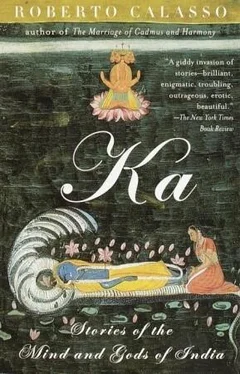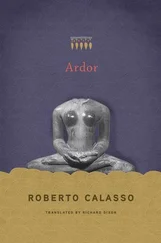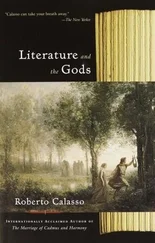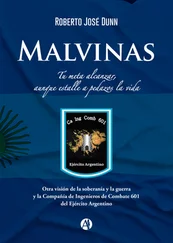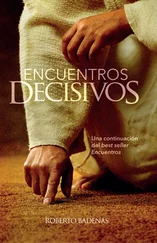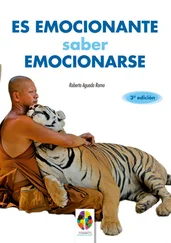Dadhyañc went on: “It’s not so surprising that Death dwells within the Sun. What is surprising, when you think of how he first appeared, kicked away as trash by his mother, is that the Sun is alive. It was his brothers, born before him and all well-formed, who saved him. They didn’t want him to be lost. So they gave Vivasvat his shape. One day he would generate the line of those who procreate and die.
“Left alone, abandoned by Saranyū and aware now that he had been tricked by her simulacrum, Samjñā (also called Chāyā, Shadow), Vivasvat thought back to the day of his birth. He suspected Saranyū might have returned to her father’s house, out of nostalgia for her real lover. He would look for her there. Tvaṣṭṛ greeted him calmly. He said that yes, it was true, Saranyū had come back, but they hadn’t let her stay, on the contrary, they had chided her for this rash decision. Then Tvaṣṭṛ looked up at Vivasvat and said: ‘You’ll never find her again, the way you are now. Saranyū lived in terror when she was with you, ever afraid of your touch. If you’ll let me, I could try to make you more suitable, more tolerable to living beings.’ Even as he was speaking, he had started to clear a big bench strewn with tools. He invited Vivasvat to lie down on it. Then he set to work with a grinding wheel. First he used a liquid to grease down Vivasvat’s limbs, then he went over them with that strange tool. Vivasvat found it a relief to suffer. Bright shreds fell away from him to roll into the corners of the workshop, where they continued to shine on their own. Losing light came as a relief, gave him an uplifting thrill. And at the same time he felt the agony of those parts of his body that left him. Tvaṣṭṛ worked away like a craftsman absorbed in his task. He’d begun with the shoulders and trunk. Now he was grinding down his thighs. When he touched a knee, Vivasvat felt he had to do something. With one hand he grabbed Tvaṣṭṛ’s wrist and said: ‘No further that way. It doesn’t matter if my feet stay shapeless. No one will know what they’re like when I’m standing on my chariot. There will always be a charioteer to hide me. I’ll wear boots when I have to walk. But no one will have to see my feet. The formless is part of me. I can’t abandon it. You all feed on the formless. Even you wouldn’t exist if it weren’t for my formless feet, which you vainly sought to grind down. The world is held together by something left over beyond it, that overwhelms it. But if that something weren’t there, there wouldn’t be anything. Now leave me be. And thank you. I’ll be on my way once more to find my only bride.’”
The Aśvins listened, their eyes on the ground. They were discovering the many branches of their family, after having long wandered the world as orphans. But above all they wanted to know more about one of their stepbrothers: Mṛtyu, Death. Dadhyañc realized even before they asked. He went on: “The more thoughtful, loving, and delicate her husband was with her, the more terrified Saraṇyū felt. A hem of the robe he took off coming to bed could set fire to a continent. Yet it wasn’t that that frightened Saraṇyū. It was the freezing cold. She didn’t want to be inside Vivasvat because she felt an enormous, silent cavity open up within him, echoless, empty of all vibration. She felt that in getting to the bottom of Vivasvat she would come across an invasive guest, who refused to leave the house, or perhaps was its master. She didn’t want to meet him. But she couldn’t help reproducing him. When she gave birth to twins — everything for her came in couples or copies — she recognized Death’s features in the male child, Yama. It was as if that son had come from the last receptacle of Vivasvat’s substance and then, in his mother’s womb, met his copy, his twin sister, Yamī. Now at last he would agree to go down into the world and have a history like so many other gods. He would no longer be merely the black shadow that forms behind all that dazzles. But he couldn’t have become manifest unless together with Yamī. There was a pact, so it seemed, between death and duplication.” Here Dadhyañc fell silent. Then he went on: “Before becoming Yama, Death didn’t have a proper name, as if he were a thing rather than a person. Yet the most terrifying thing about Death was his appearance as a person. A figure with indistinct features, who would not let himself pass incognito. You recognized him in the pupil of whoever came to meet you, be it lover or enemy. Or you glimpsed him behind the burning screen of the Sun, like a black silhouette that penetrated the eye of whoever saw it, and for a long time refused to go away, an intrusive guest.
“Death sank up to his thighs in the substance of the Sun. His torso emerged from the red-hot mass and looked downward. If you raised your eyes from the earth, behind the barrier of light you could sometimes glimpse a dark outline, as though of someone greeting you from afar. No one was eager to answer that greeting. They said they didn’t want to look at the Sun so as not to be blinded. The truth is they didn’t want to acknowledge the greeting of that silent, unknown being, to whom, in whispers, they would sometimes allude, in the name ‘black sun.’
“Death is sunk up to his thighs in the Sun and in the heart, as in a soft and burning pastry. From afar people would see his shadow fording the Sun as if it were a ditch. All of a sudden the shadow seemed to reach a shallow spot, because more and more of it appeared. You could see the thighs, the knees. When you could see Death’s feet someone would say: ‘He’s been cut off — and at that moment someone else would die.
“Death is that person half buried in the Sun, who slowly devours it. Just as the ‘person,’ purusa , who can be seen at the center of the pupil — and it is the one, barely perceptible sign the mind allows us of its existence — slowly devours the body in which it has been set. Death is to be found wherever some substance is consuming itself. Death is the act of eating. Thus we are a debt owed to Death. We pay that debt every passing moment, cunningly stretching it out and breaking it up with the strength Death itself gives us, stingily conceding, moment by moment, to the Person in the Eye a particle of ourselves to devour.
“The Person in the Eye is not born alone, cannot exist alone. The first couple were the two Persons in the Eye. In the right eye was Death. In the left eye his companion. Or again: in the right eye was Indra. In the left eye his partner Indrāṇī. It was for these two that the gods made that division between the eyes: the nose. Behind the barrier of the nose two lovers hide, as though separated by a mountain. To meet, to touch, they must go down together into the cavity that opens up in the heart. That is their bedroom. There they twine in coitus. Seen from outside, the eyes of the sleepers are hidden by the eyelids as though by a curtain around a bed. Meanwhile, in the heart’s cavity, Indra and Indrāṇī are one inside the other. This is the supreme beautitude. That’s why you mustn’t wake a sleeper suddenly, so as not to disturb Indra and Indrāṇī’s lovemaking. That’s why whoever is woken finds his mouth sticky, because those two divinities are emptying their seed, while in the sleeper’s mouth the liquids of Indra and Indrāṇī mingle.
“Death and duplication go together. Never the one without the other. The science of reflection and scission, the unleashing of doubles, systematic substitution, simultaneous glances, both inward and outward: all these are the works of duplication. Only he who encourages them can gain access to knowledge. But duplication comes together with Death. And only knowledge can defeat Death. This is the circle.”
They were sitting on three stools. Dadhyañc had a view of the Aśvins’ almost identical profiles as they focused their attention elsewhere. One of them said: “When we were still children, we were given certain words that were attributed to Prajāpati and that none of the Devas or Asuras claimed to have understood, though they had committed them to memory. These were the words: ‘The ātman , the Self, released from every evil, subject neither to age, nor death, nor suffering, nor hunger, nor thirst, whose desires and whose thoughts are reality, this one must seek, this one must strive to know. He who achieves that ātman , that Self, and knows it, shall possess all worlds and all desires.’” Then the other Aśvin said, as though taking over from where his twin had left off: “Could it be that the sovereign of all words is this ātman , a reflexive pronoun that declines like a masculine noun, a word we’ve used every day without thinking, without sensing that this was the secret, that it was to this we must come?” The more baffled they felt, the more they wanted to learn — they told Dadhyañc. He looked them in the eye and said: “The ātman comes before the aham . The Self comes before the I: the reflexive pronoun comes before the personal pronoun: why? The most basic thing is not that a being says ‘I’: all animals say ‘I’ from the first moment they emit a sound. Between Self and I there is but one difference: the Self watches the I, the I does not watch the Self. The I eats the world. The Self watches the I eating the world. They are two birds, they sit on opposite branches of the same tree, at the same height, at the same distance from the trunk. To anyone watching them, they are almost the same. Like yourselves. No one can separate them. The first words the Self said were: ‘I am.’ Nothing existed as yet when the Self said: ‘I am.’ The I owes its existence solely to the fact that it was pronounced by the Self. From the start the two had the shape of a person, puruṣa . Even though the whole world would later appear from the Self and the Self would sink into it right to the tips of his fingernails, still the Self and the I too preserved the form of a person. Which is why we speak to them and they to us.”
Читать дальше
